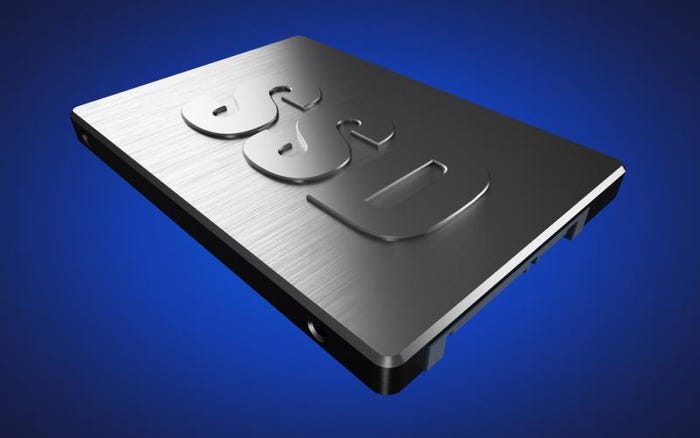6 Ways SSDs Are Cheaper Than Hard Drives
When it comes to TCO, solid-state drives are a better deal than HDDs.
July 12, 2017

With all the hype and counter-hype on the issue of solid-state drives versus hard-disk drives, it’s a good idea to step back and look at the whole pricing picture. This is a confluence of the relative cost per TB of flash die versus HDD assemblies, the impact of SSD performance on server count for a given workload, and the differential in markups by OEM vendors to their end users.
The capacity of flash die has been increasing at an explosive rate over the last year. The “simple” concept of stacking flash cells in the third dimension, coupled with the stacking of these 3D die on top of each other to make a “super-die” has grown capacity by as much as 256 times per flash chip. To put this in perspective, HDD capacity took over 20 years to achieve what SSDs have done in a single year.
I believe SSDs beats HDDs in most use cases today based on total cost of ownership. I’m not just talking power savings, which are typically $10 or $12 per year. SSDs are blindingly fast and that makes jobs run fast, too. The result is you need fewer servers and in many cases these savings offset the additional costs of SSDs.
TCO calculation and the cost comparison between SSD and HDD is complicated by model class and drive markup approaches by vendors. Traditionally, we distinguished enterprise drives with dual-port SAS interfaces from nearline drives with SATA. This distinction has fallen apart in SSDs. Many storage appliances don’t need enterprise dual-port drives, while NVMe is replacing SAS and soon SATA as the SSD interface. For many applications, low-cost SSDs are adequate for the job, which changes buying patterns.
Typical OEM vendor markup ratios are as much as 14X for SSDs, making them even more expensive than raw cost would suggest compared with HDDs that typically see 10X markups or less. COTS systems are starting to drive these markups down, while buying from drive makers directly (if you are a major cloud service provider) or from master distributors (for mere mortals) opens the door to much lower SSD prices.
There are underlying trends in IT that factor into the cost of storage. First, we are rapidly migrating away from the traditional mainstay of storage, the RAID array, to more compact storage appliances that have much more software content, and, with fewer SSD drives, are able to deliver much more data. Second, the new storage appliances use the high bandwidth of SSDs or flash to compress stored data as a background job. HDDs are too slow to do this. The result is much more storage for the same price.
Let’s look more closely at these factors that make SSDs more economical in the long run.
(Image: jules2000/Shutterstock)

